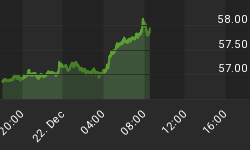***This is an excerpt of our May 31st Investment Analysis Report.***
Back in February we stated: "As the chart of the Crash of 1987 below demonstrates, the 3rd wave of a market decline is usually the most distinct." With the third wave now underway, the Wall Street Journal is reporting on the parallels between the Crash of 1987 and May 6th's Flash Crash. We suspect that the comparison will transition to the Crash of 1929 as the selling continues. Here is why:
A Must Listen
The rumor (reported as news) that the drop was merely one trader's error was refuted by this 11 minute audio clip from the S&P500 futures pit during the 1000 point fall. Clearly, markets are not rational calculating machines as some professors would have us believe, but a herd of emotional participants.
The S.E.C. report describes the stock plunge of Proctor and Gamble on May 6th this way: "PG declined from more than $60 to a low of $39.37 in approximately 3.5 minutes," the report said. Then the stock recovered above $60 in about one minute."
This not only happened to P&G but numerous other S&P 500 stocks. There is precedence for this lack of liquidity (buyers AND sellers) in the stock market. It was Black Thursday; Oct 24th, 1929:
"Still, in its own way, the recovery on Black Thursday was as remarkable as the selling that made it so black. The Times industrials were off only 12 points, or a little more than a third of the loss of the previous day. Steel, the stock that Whitney (Ed note: broker used to prop up prices by the banker pool) had singled out to start the recovery had opened the morning at 205½, a point or two above the previous close. At the lowest it was down to 193½ for a 12 point loss. Then it recovered to close at 206 for a surprising net gain of 2 points for this day. Montgomery Ward, which had opened at 83 and gone to 50, came back to 74. General Electric was at one point 32 points below its opening price and then came back 25 points." - The Great Crash: 1929. John Kenneth Galbraith, 1954.
Also note the tremendous 400+ point rally day on May 10th after the announcement of a bailout of the European banks. This reminds us of the middle of September 2008; when Lehman Brothers failed and the U.S. proposed its own bank bailout: the Tarp. During this time, the DJIA was swinging wildly around the 11,000 level. Then over the next five months, the market lost roughly 4000 points.
"We have had absurd intraday swings in prices as well as momentum." - Bob Pisani, CNBC commentator. May 27, 2010.
What followed Black Thursday's afternoon recovery rally was eventually Black Tuesday:
"Selling began as soon as the market opened and in huge volume. Great blocks of stock were offered for what they would bring...The air holes, which the bankers were to close, opened wide. Repeatedly and in many issues there was a plethora of selling orders and no buyers at all." - The Great Crash: 1929. John Kenneth Galbraith, 1954.
We have obviously been waiting for an Acapulco Cliff Dive. We expect the Flash Crash is just the start.
"The singular feature of the great crash of 1929 was that the worst continued to worsen. What looked one day like the end proved on the next day to have been only the beginning. Nothing could have been more ingeniously designed to maximize the suffering, and also to insure that as few as possible escaped the common misfortune." - The Great Crash: 1929. John Kenneth Galbraith, 1954.
***More For Clients and Subscribers***
The Rain in Spain
As we explained in our February report titled "Bernanke Fails His Own "Two Lessons Learned" from the Great Depression;
"However from the Bloomberg chart below, it is Spain and Ireland that are even more important to European bank balance sheets. With European governments 'crowding out' private sector needs for capital and/or defaulting (causing massive losses at European banks), the risk is that a large European bank failure will generate another wave of financial crisis around the world such as happened in late 1930 and early 1931."
The Spanish bank consolidation/failures are coming fast and furious. On May 24th Caja Sur was taken over by the central bank. On May 25th 4 banks were merged. On Friday May 28th, Spain was stripped of its Triple A rating. This new rating/pricing on Spanish debt will show up in French and German banks, which hold roughly $200B each.
"I would recommend you panic. The European banking system is in a crisis." - Hugh Hendry, Eclectica Asset Management
At Lamont Trading Advisors, we provide wealth preservation strategies for our clients. For more information, feel free to contact us. Our monthly Investment Analysis Report requires a subscription fee of $40 a month. Current subscribers are allowed to freely distribute this report with proper attribution.
***No graph, chart, formula or other device offered can in and of itself be used to make trading decisions. This newsletter should not be construed as personal investment advice. It is for informational purposes only.















